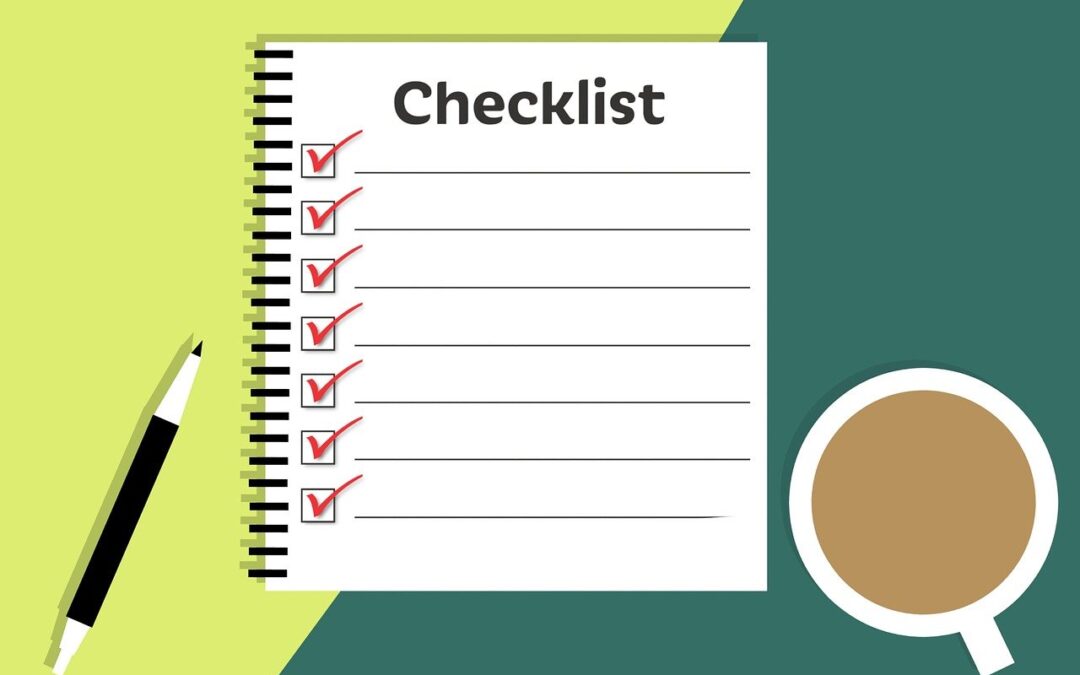
by Devon Bellamy | Sep 25, 2023 | Compliance, Employee Benefits, Human Resources
The Retirement Savings Crisis
The Securing a Strong Retirement Act, also known as SECURE Act 2.0, was signed into place in December 2022. This law introduced new rules and requirements for retirement plans, all aimed at helping Americans save more money for their retirement. This comes as good news for working Americans who worry that they won’t have enough money when they retire.
A 2021 report from the National Institute for Retirement Security highlighted how a lot of U.S. workers are concerned about their retirement savings. It showed that most people believe there’s a real crisis, and many fear they will have to work beyond the age of retirement just to survive. For them, the new rules from SECURE Act 2.0 could be considered a lifesaver.
Unfortunately, however, they are causing real challenges for organizations. Those who rely on manual processes to make sure they remain compliant may find them especially challenging.
The new regulations will be enforced starting on December 31, 2024. That means organizations need to get ready pretty quickly.
Understanding SECURE Act 2.0
To better understand these new rules and what organizations need to do to prepare, let’s take a closer look at the details.
- Section 101: Automatic enrollment is required for all new 401(k) and 403(b) plans implemented after December 29, 2022. Additionally, enrollment must be set between 3% and 10% of the employee’s pay and increased by 1% each year until it reaches 10% to 15%.
- Section 125: Reduced eligibility requirements for 401(k) plans make it easier for part-time workers to join 401(k) plans. Instead of three years, employees must have worked at least two consecutive years, with at least 500 hours of work each.
- Section 603: Catch-up contributions are available for individuals 50 years or older, who earned over $145,000 last year. It allows them to classify catch-up contributions as Roth contributions. This offers significant tax benefits.
Unfortunately, these changes make it more complicated for companies needing to update their systems to handle these new rules.
Overcoming Implementation Challenges
Following these new rules can be really hard for smaller organizations because they have to do a lot of things manually. Unfortunately, the manual approach makes it more likely that human error in the process will go unnoticed until it’s too late. The potential consequence of this oversight can be extreme. Your company could face fines for even one tracking error.
Therefore, it’s vital to begin preparing for compliance immediately if you are affected by SECURE Act 2.0’s Section 125 and/or Section 603.
Does your company have the necessary technology in place to face this and the other challenges it faces?
Technology Solutions for Compliance
To ensure compliance, companies require the right technology. They need to be able to transfer a lot of data between their systems and the retirement plan providers’ systems. This includes payroll details and other sensitive personal identifiable information (PII).
Companies can choose from various methods including:
- Manual Data Entry
- SFTP
- Custom Integrations
- Unified employment APIs
Each has its benefits. The more automated the system is, the more accurate it is. The simpler and less expensive the method is, the more likely it is to result in costly mistakes.
Getting help from professional retirement advisors can help you assess your options and make the right choice for your company.
The Role of Retirement Advisors
Ideally, you should be planning and securing the support and tools you’ll need for 2.0 now. To ensure your company’s retirement landscape remains compliant, consider seeking the assistance of a professional retirement advisor. Advisors can:
- Inform you of important deadlines and keep you on track.
- Help you choose the right retirement plans.
- Explain what your company needs to do to follow the rules.
- Ensure compliance and safeguard you from legal consequences.
- Recommend tools to make sure the company is ready for the changes.
The right retirement advisor can be a valuable asset for companies wishing to identify and avoid potential pitfalls before SECURE Act 2.0 goes into effect.
A Final Note
With a looming retirement crisis, the need for change is apparent. SECURE Act 2.0 aims to provide opportunities for US workers to save for a secure retirement. Unfortunately, the manual processes used by many organizations present an increased risk of errors that could result in non-compliance.
Therefore, it is essential for plan providers and employers to begin enlisting support and implementing the correct technology to automate their systems. With the right resources, you should be able to seamlessly integrate your systems, reduce errors, and ensure compliance with SECURE Act 2.0–effectively and on time.

by Devon Bellamy | Sep 20, 2023 | Compliance, Employee Benefits, Human Resources
For many people, the workplace is their home away from home. For others, work is conducted from home. Regardless of whether you have a traditional work day or enjoy a remote or hybrid work schedule, you occasionally need a little flexibility in your life. During those times of need, many turn to FMLA to provide a bit of breathing room.
The Family and Medical Leave Act (FMLA) is a federal law that offers eligible employees of certain employers the right to take unpaid, protected leave for specific family and medical reasons. Covered employers must also maintain employees’ health benefits during this leave and guarantee their return to the same or equivalent positions afterward.
Many companies are subject to FMLA. These consist of public agencies and public or private schools, regardless of size. It also includes private-sector employers that have 50 or more employees during 20 or more workweeks in the year.
If your company falls under FMLA’s jurisdiction, this useful checklist can help ensure your compliance with FMLA.
FMLA Requirements
If your company falls under FMLA jurisdiction, you are required to display the FMLA poster where employees and applicants can easily see it. You can either use the U.S. Department of Labor’s (DOL) model poster or create your own.
You should also provide your employees with general notice about FMLA leave in the employee handbook. You can use the DOL’s model as an example. Your written materials regarding leave and benefits must contain all of the same information as the DOL’s model.
You are also required to maintain records related to FMLA compliance for at least three years.
Administering FMLA
The steps for administering leave are fairly straightforward. You should have an established method for tracking FMLA leave usage, including intermittent or reduced scheduled leave. You can create your own forms for administering FMLA leaves or use the DOL’s model forms.
Train your managers on FMLA compliance. They should be able to identify qualifying leave requests. It is also important that they understand the laws prohibiting interference and retaliation for requesting or taking leave.
Determining Eligibility for FMLA Leave
Eligibility for leave is based on specific criteria, the reason for the request, and whether the employee has available FMLA leave. To be eligible, an employee must meet the following requirements:
• Work for a company covered by the FMLA
• Worked for the company for at least 12 months
• Worked at least 1,250 hours for the company during the 12 months prior
• Works at a company with at least 50 employees
Qualifying reasons include caring for a newborn or adopting a child, dealing with a serious health condition, and military-related exigencies.
Eligible employees can take up to 12 weeks within a 12-month period.
Leave Process
Employers have the right to request a doctor’s note if an employee needs time off due to their own or a family member’s severe health issue. You can also ask for certification if the leave is related to military family matters. The Department of Labor (DOL) has standard forms like Form WH-381 that you can use for this purpose.
When an employee asks for leave, they should be told about this requirement. If medical certification is needed, they should be given the proper form along with the Notice of Eligibility and Rights & Responsibilities. They should have up to 15 calendar days to return it.
The Designation Notice states whether you decide to approve or decline FMLA leave. It should be given within five business days of the leave request (or when the certification is submitted if needed). You can use the DOL’s standard Designation Notice (Form WH-382) for this.
In Conclusion
As responsible employers, it’s vital to uphold certain standards to support your employees during their Family and Medical Leave Act (FMLA) journeys. It’s essential to remember that the specifics of FMLA compliance can differ based on unique situations and the presence of state or local regulations. This commitment to FMLA compliance not only benefits your employees but also strengthens your company’s commitment to their well-being and job security. You can use this as a guide to ensure the best support to your employees during their time of need. Review your company’s FMLA compliance, check out The 7 Steps for FMLA Compliance, and contact Launchways for further assistance.

by Devon Bellamy | Sep 12, 2023 | Employee Benefits, Human Resources, Mental Health in the Workplace
In recent years, the workplace landscape has undergone significant changes, largely influenced by the unprecedented events of the COVID-19 pandemic. As we approach 2024, a new trend has emerged that is taking precedence in the minds of corporate leaders and HR professionals alike: mental health.
Businesses have seen workers dealing with mental health issues, including anxiety, depression, or having problems with substance abuse. Unfortunately, the problem has worsened. In 2023, employers reporting mental health problems among their employees rose from 44% to 77%. As many as 16% believe the problem will continue to get worse.
Mental health concerns are not only impacting the employees of large corporations but also smaller businesses. To deal with this in 2024, employers are exploring strategies to prepare for mental health challenges that lie ahead for businesses of all sizes.
Mental Health Issues Also Affect Smaller Businesses
The growing awareness of mental health issues is not confined to large corporations; it extends its reach to smaller businesses as well. In fact, mental wellness challenges are often felt more acutely in smaller organizations due to limited resources and support systems.
Several factors contribute to the impact of mental health on smaller businesses:
Close-knit Work Environments: Smaller businesses often have a more familial atmosphere, which can be both a strength and a weakness. While it fosters strong bonds among employees, it also means that mental health issues are more visible and can have a cascading effect on team dynamics.
Limited Resources: Smaller businesses may lack the financial resources to invest in comprehensive mental health programs or hire dedicated mental health professionals. This limitation can make it challenging to provide adequate support to employees dealing with mental health concerns.
Stress and Workload: In smaller teams, a single employee’s absence or reduced productivity can significantly impact the overall workload. This can lead to heightened stress levels and burnout, further exacerbating mental health issues.
Lack of Awareness: Smaller businesses may not have the same level of awareness and education regarding mental health as larger corporations. This can result in a lack of understanding and a failure to recognize the signs of mental health challenges.
Given these factors, it is evident that mental wellness concerns are not limited to a specific company size or industry. Smaller businesses are equally affected, and addressing mental health issues is imperative for fostering a healthy workplace environment and sustaining employee well-being.
How Can Companies Prepare for Health Care Challenges Ahead?
As mental health takes center stage in corporate concerns heading into 2024, companies of all sizes must proactively prepare for the healthcare challenges that lie ahead. Here are some strategies that organizations can adopt to address mental health and promote mental wellness:
Create a Stigma-Free Environment
One of the first steps in addressing mental health in the workplace is to create a stigma-free environment. Encourage open conversations about mental wellness and ensure employees feel safe discussing their challenges without fear of judgment. This can be achieved through awareness campaigns, workshops, and training programs.
Implement Mental Health Programs
Offering mental health programs and resources is crucial. These programs can include Employee Assistance Programs (EAPs), counselling services, stress management workshops, and access to mental health professionals. Companies should invest in these resources to provide employees with needed support.
Flexible Work Arrangements
Flexible work arrangements, such as remote work options and flexible hours, can help employees better manage their mental health. These arrangements provide the flexibility to balance work with personal life and mental wellness.
Training for Managers
Managers play a pivotal role in supporting employees’ mental health. Provide training to managers on recognizing signs of mental health issues, having empathetic conversations, and connecting employees with appropriate resources.
Employee Wellness Initiatives
Wellness initiatives encompassing physical, mental, and emotional well-being can significantly impact. Encourage activities such as mindfulness and meditation sessions, fitness programs, and wellness challenges to promote overall health.
Evaluate Health Insurance Plans
Review and enhance health insurance plans to provide comprehensive coverage for mental health services. Ensure employees have access to mental health professionals and treatment without financial barriers.
Regular Surveys and Feedback Loops
Establish regular surveys and feedback mechanisms to gauge employee well-being and gather insights into the effectiveness of mental health initiatives. Use this data to refine and improve programs.
Inclusivity and Diversity
Promote inclusivity and diversity in the workplace, as a diverse workforce can bring unique perspectives and experiences related to mental wellness. Ensure that inclusivity is a core value of the company culture.
Encourage Work-Life Balance
Encourage employees to maintain a healthy work-life balance. Discourage overworking and emphasize the importance of taking time off when needed.
The Takeaway
As we approach 2024, mental health has risen to the forefront of corporate concerns, affecting both large and smaller businesses. Recognizing the significance of mental health in the workplace is the first step toward creating a healthier and more productive work environment.
Companies can prepare for the healthcare challenges ahead by adopting a holistic approach that includes destigmatization, the implementation of mental health programs, flexible work arrangements, manager training, wellness initiatives, improved insurance coverage, employee feedback mechanisms, and a commitment to inclusivity and work-life balance.
In the evolving landscape of corporate priorities, mental health and human resources professionals have a vital role in fostering mental wellness and ensuring that employees thrive professionally and personally. By addressing mental health challenges head-on, companies can build a healthier, more engaged workforce and better equipped to navigate the demands of the modern workplace.

by Devon Bellamy | Aug 29, 2023 | Employee Benefits, Human Resources, Mental Health in the Workplace
Mental health continues to be a hot topic of conversation among HR leaders and health insurance providers. Recently, the Departments of Labor (DOL), Health and Human Services (HHS), and the IRS proposed a rule to amend the existing Mental Health Parity and Addiction Equity Act (MHPAEA).
With the DOL’s recent request for input from Group Health Plans and issuers regarding Nonquantitative Treatment Limitations (NQTLs), companies should prepare. They can anticipate ongoing discussions about how mental health benefits are administered.
Following their proposed rule, the three departments issued their second yearly report to Congress. In it, they examined mental health parity according to the rules of the Consolidated Appropriations Act of 2021 (CAA).
Here are the highlights.
Common Issues With Mental Health Parity
Unfortunately, only a few Group Health Plans did well. Most failed to meet the criteria guaranteeing equal treatment between medical/surgical and mental health benefits. Furthermore, according to numerous comparative analyses, many issuers still needed improvement. This was even after receiving multiple warnings.
Problems with parity concerning mental health benefits could be categorized into six groups.
- Annual dollar limits
- Limits on treatment, such as coverage duration, frequency, visit count, etc.
- Overall lifetime dollar limits
- Financial prerequisites, such as co-payments, coinsurance, deductibles, etc.
- Accumulated financial prerequisites
- Benefits across all categories
Incidentally, this is an excellent checklist for companies to start reviewing their mental health benefits. The goal is to streamline the review process and lessen the burden on health plans. This establishes a data-driven method for assessing whether these limitations comply with the law.
Although few issuers will undergo government audits, they are still required to comply with the rules. Therefore, the evaluation of benefits through an NQTL analysis and adoption of tactics to ensure parity is necessary.
Reviewing Mental Health Benefits
Take the time to review agreements with your plan’s providers. Plans are fiduciaries. That means, as employers, you are responsible for decisions regarding MHPAEA compliance. There are a couple of things to consider as your company reviews its plan design and benefits.
- How successful is the existing language at addressing mental health benefits?
- Do restrictions or limits exist for mental health issues that do not exist for medical/surgical benefits?
As a decision-maker for your company, you should know your plan’s benefits regarding mental health. In fact, you should be capable of explaining them to employees.
Completing an NQTLs Analysis
Conducting an NQTLs analysis is a given. It has been required since February 2021. In the future, group health plans will be required to gather and assess relevant data. At a minimum, that includes data required by state laws regarding NQTLs and details about the number and percentages of denied claims. This helps determine how NQTLs affect access to mental health and substance use disorder benefits.
For ERISA plans, a named fiduciary may certify compliance with the rules and a review of the results. They must verify when the analysis is completed and cooperate with an audit if needed.
If the MHPAEA Proposed Rule is accepted, the new requirements apply to plans beginning January 2025. Until then, companies must continue to comply with the existing MHPAEA and CAA requirements.
Key Takeaways
In conclusion, carefully reviewing agreements with plan providers is crucial. Take a close look at the agreements you have with plan providers. The employer is held accountable for any mistakes or choices related to compliance with the MHPAEA. That holds true whether the plan is fully insured or self-funded.
For self-funded plans that work with one or more TPAs (Third Party Administrators), schedule time for discussions about benefits. These conversations should help companies to:
- Engage in the necessary actions
- Pose the right questions
- Carry out a thorough analysis
For fully insured plans, pay attention to the specifics. You should thoroughly understand your plan’s mental health benefits so you can explain them to participants.
This proactive approach is essential. It ensures that mental health parity is upheld and participants receive the benefits to which they are entitled.




